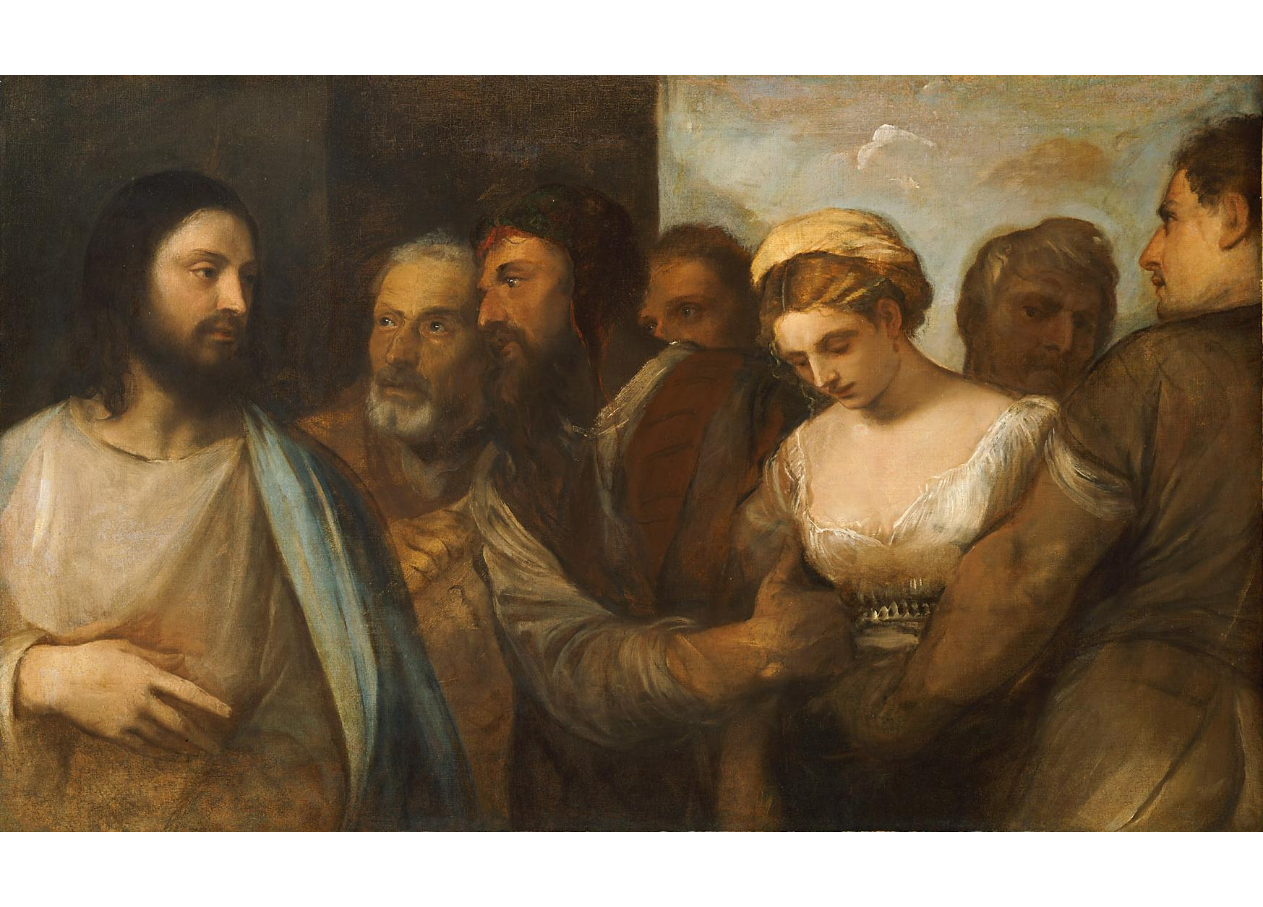+39 0669887260 | info@wucwo.org | Contact us
Art for Mediatation - October 2023

Tiziano Vecelio (Pieve di Cadore c. 1488 - Venice 1576), Christ and the Adulteress, c. 1512/15, oil on canvas, 82.5 x 136.5 cm, Vienna, Kunsthistorisches Museum
Month of October.
Women of the New Testament: The Adulteress.
While Jesus went to the Mount of Olives. But early in the morning he arrived again in the temple area, and all the people started coming to him, and he sat down and taught them. Then the scribes and the Pharisees brought a woman who had been caught in adultery and made her stand in the middle. They said to him, "Teacher, this woman was caught in the very act of committing adultery. Now in the law, Moses commanded us to stone such women. 2 So what do you say?" They said this to test him, so that they could have some charge to bring against him. Jesus bent down and began to write on the ground with his finger. But when they continued asking him, he straightened up and said to them, "Let the one among you who is without sin be the first to throw a stone at her." Again he bent down and wrote on the ground. And in response, they went away one by one, beginning with the elders. So he was left alone with the woman before him. Then Jesus straightened up and said to her, "Woman, where are they? Has no one condemned you?" She replied, "No one, sir." Then Jesus said, "Neither do I condemn you. Go, (and) from now on do not sin any more." (John 8, 1-11)
Titian's depiction of the Gospel narrative is truly singular. First of all, we note that there is no setting at all. Yet the Gospel tells us that the scene takes place in the temple of Jerusalem and therefore the painter from Cadore could have expressed his creativity in depicting architecture, for example. Instead, there are seven half-length figures. We recognise two of them immediately: Jesus, on the far left of the painting, and the woman accused of adultery, who is situated on the right-hand side of the canvas.
If we read the account from John's gospel again, we realise that the moment depicted in Titian's painting is when Jesus stands up and tells those who wanted to stone the woman, that the one among them without sin be the first to throw a stone at her.
The thing that strikes me most when looking at the painting is how Titian definitely and deliberately gives centrality and prominence to only two characters: Jesus and the woman.
The centrality of Jesus is in some ways taken for granted: in every Gospel episode he is the centre, the inspirer, the protagonist. And so it is in this story too. He is addressed by the Scribes and Pharisees, but he was already in the midst of a crowd that listened to him and was instructed by him. And Titian renders this centrality by moving the person of Jesus to the extreme left, so that all the other characters crowding the canvas converge on him.
But there is a detail that unites the figure of Jesus with the one of the woman he was supposed to judge and condemn, acting according to the law. This component is the light, an element very dear to Titian, which descends from above (an obvious reference to divinity) and illuminates Jesus and above all the woman.
A second element that makes the only female figure in the painting central is the gaze, or rather, on closer inspection, it would be better to say the absence of a gaze. In fact, the woman is the only character whose gaze we do not catch, because her eyes are turned downwards. And even more striking is this characteristic if we compare her gaze with the gazes of the scribes and Pharisees who were ready to stone her. We don't know what those downcast eyes mean: repentance? resignation? Humility? Is he thinking about his fate? Is he rethinking his life? ...
I like to think that soon the woman's face will lift up to meet the benevolent and merciful gaze of Jesus: 'Neither do I condemn you; go, and from now on sin no more'. And then we will also be able to see her gaze, full of joy and gratitude for her newfound life.
(Contribution by Vito Pongolini)